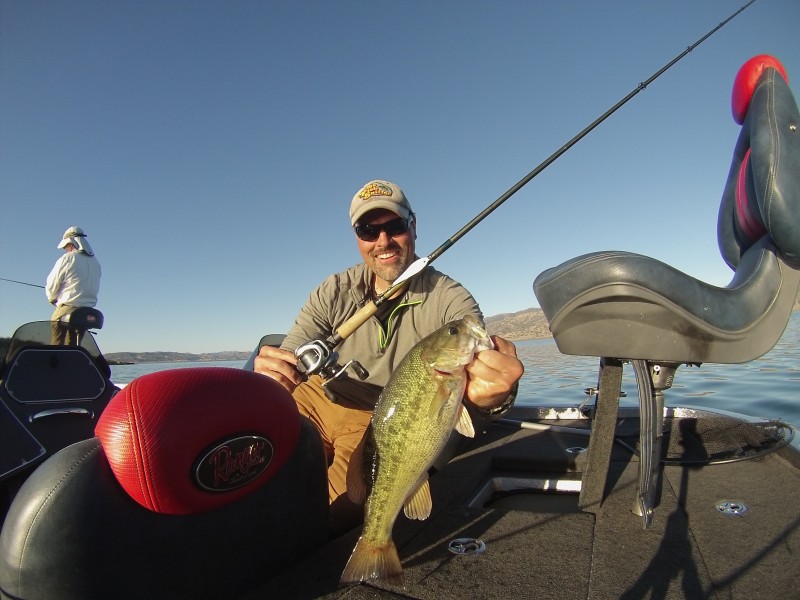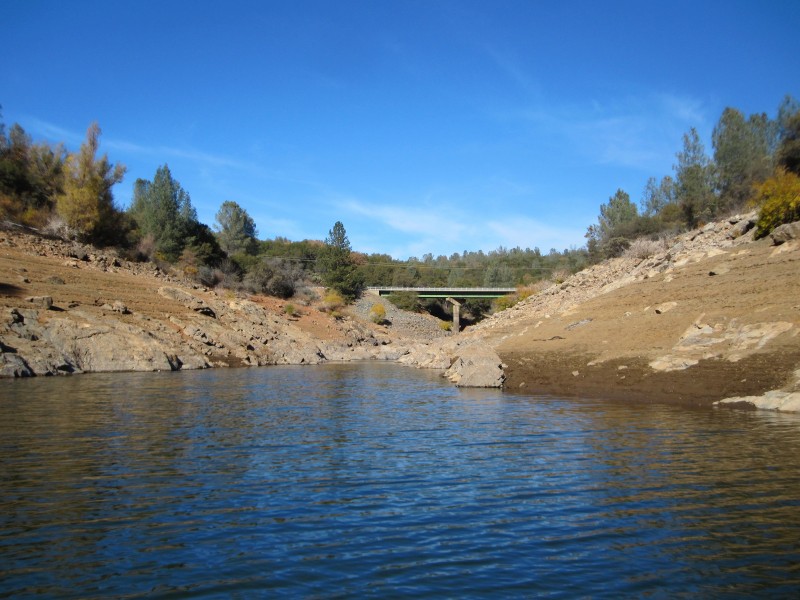The days are have been getting shorter for a few weeks now and before long we’ll start to notice that it’s getting dark earlier. The water in our reservoirs is still warm in late August and early September, but they will start cooling soon. It might not feel like it to anglers now wearing shorts and flip flops but fall is looming just around the corner.
We all love to bass fish during the spring, but truth be told some of the best fishing of the entire year takes place during the fall. While the hot fall window is shorter than the extended spring season that starts in March and can extend into May, the bass action during the fall can be very intense.
One of the biggest factors effecting bass and consequently, bass anglers is the water temperature. In spring, there is a prolonged wind up to the bite because the water temperature has to creep up from the lower 40’s into the middle to upper 50’s before the cold blooded bass are feeling feisty enough to chase baits and lures consistently. That’s a span of 15 to 20 degrees at a time when weather is notoriously unstable and the nights are long and chilly.

During the fall on the other hand, the temperature has to drop from the upper to middle 70’s into the high 60’s for the fishing to turn on. Not only is this a smaller change, but also the bass that have been suspended over deep cool water during the latter part of summer are already feeling their oats, chasing and feeding heartily. For the action to get really crazy all that needs to happen is for the temperature to drop enough to draw baitfish toward the surface or in tight to structure.
The first step toward enjoying great results when fishing during the fall is understanding the relationship and behavior of baitfish and bass. Baitfish like shad and pond smelt are found in areas that provide cool water in the upper 50’s to the lower 70’s and ample aquatic nutrients. Dropping surface temperatures in the early fall draw baitfish to the surface and shortly thereafter they begin moving toward tributaries were the densest concentrations of plankton and other nutrients exist.
Mother Nature instilled bass with a strong survival instinct. In the fall bass savagely gorge on baitfish. First and most obviously, they are putting on weight for the long lean winter months to come. Since bass don’t carry calendars this behavior is most likely cued by the shortening hours of daylight. On an instinctive level the bass know that before long the water temperature will drop to a point that robs them of their ability to chase forage no matter how abundant it may be.
As soon as nighttime temperatures begin dropping, start scouting the deep open water outside small tributaries and within narrow lake arms. As you explore these areas look for bait breaking the surface, but also keep an eye on the sonar for balls of bait holding below the surface. When bait is located, a number of lures can be used to probe for bass.
If the bait is deep, let’s say in the 20 to 35 foot zone, a spoon such as a Duh. Kastmaster or a Krocodile jigged vertically is hard to beat. These same spoons are effective when fished horizontally for bass chasing bait near the surface. Using a spinning rig or casting rig loaded with 20 to 30 pound braided line tipped with an 8 foot section of 25 pound fluorocarbon, simply cast the spoon well beyond the flashing bait and immediately begin a slow retrieve with the rod tip held high. This way the spoon will be swimming along 1 or 2 feet below the surface.
I believe that spoons are among most underutilized lures in bass fishing. Most guys acknowledge their effectiveness when fished vertically, but most anglers don’t think of fishing them horizontally. Trout anglers trolling with Kastmasters, Cripplures, Needlefish and Sep’s Pro Secrets catch big numbers of bass. Why? The answer is simple; these lures match the size and action of the bait bass often feed on. In addition, trout trollers are generally working in open water well off the bank.

Suspended bass holding offshore over deep water represent one of the most challenging situations in bass fishing, yet trout trollers often catch these fish with relative ease. Bass are generally drawn into open water by the presence of bait and are challenging to catch because they are not relating to structure. This leaves anglers without a defined “target” to fish toward. I often wonder if bass anglers experimented with fan casting “trout” spoons if they wouldn’t put more keepers in the live well.
When the bait is holding within 15 feet of the surface other productive lures include crankbaits, spinnerbaits and surface lures such as Zara Spooks and Tiny Torpedo’s.
In situations where you can see baitfish breaking, but the bass chasing them play hard to get on reaction baits a light colored fluke rigged without added weight and dead sticked in the boils can be absolutely deadly. It’s also a great bait to follow up with after a bass strikes and misses a surface lure.

Live bait teamed with a slip bobber can also be used with very good results. One September, back before I joined the Fish Sniffer staff my dad and I located an area on the North Fork at Folsom that featured a lot of jumping baitfish.
Arming ourselves with slip bobber adorned spinning rods and two dozen minnows we caught a variety of fish including spotted bass approaching 4 pounds, rainbow trout over 4 pounds and a bad tempered squawfish that was well over 8 pounds.
The cooler the water temperature becomes the further the bait and bass will push up the tributaries and arms. As a result, they will be found in ever-shallower water. Once the bass have vacated open deep water areas, you can start targeting them holding near ambush points. The best areas feature vertical structure, access to deeper water and evidence of nearby baitfish. Standing trees and steep rock banks positioned on bends in creek channels are examples of the types of spots you should seek out.
While the weather in fall is typically more stable than it is in the spring, drastic changes can occur. When storms or cold weather move in, remember to let the water temperature dictate how and where you fish.

The air temperature may be in the 40’s, the sky can be overcast and the wind can be gusting, but if the water temperature is in the 60’s the bass will still likely be found dogging baitfish in the top 15 feet of water. The conditions on the boat may make it appear that a slowly worked jig or a spoon fished vertically over deep structure would be the best approach, when in reality the conditions below the surface call for a crankbait burned along the twists and turns of a creek channel.
As quickly as the fall fishing develops it can evaporate. Once the water temperature drops below 60 things start slowing down as both bass and baitfish begin moving deeper once again as they adopt a winter lifestyle.
Fortunately for us some of the best bass action of the year will take place in the near future. With a little effort and detective work we can get in on it before old man winter shuts things down.
